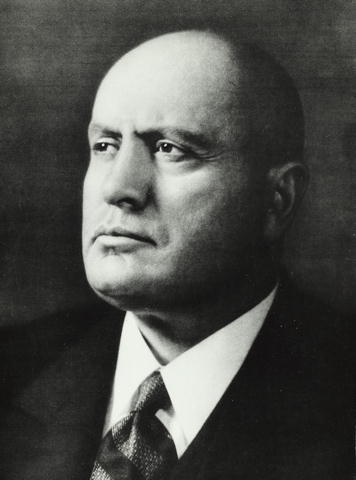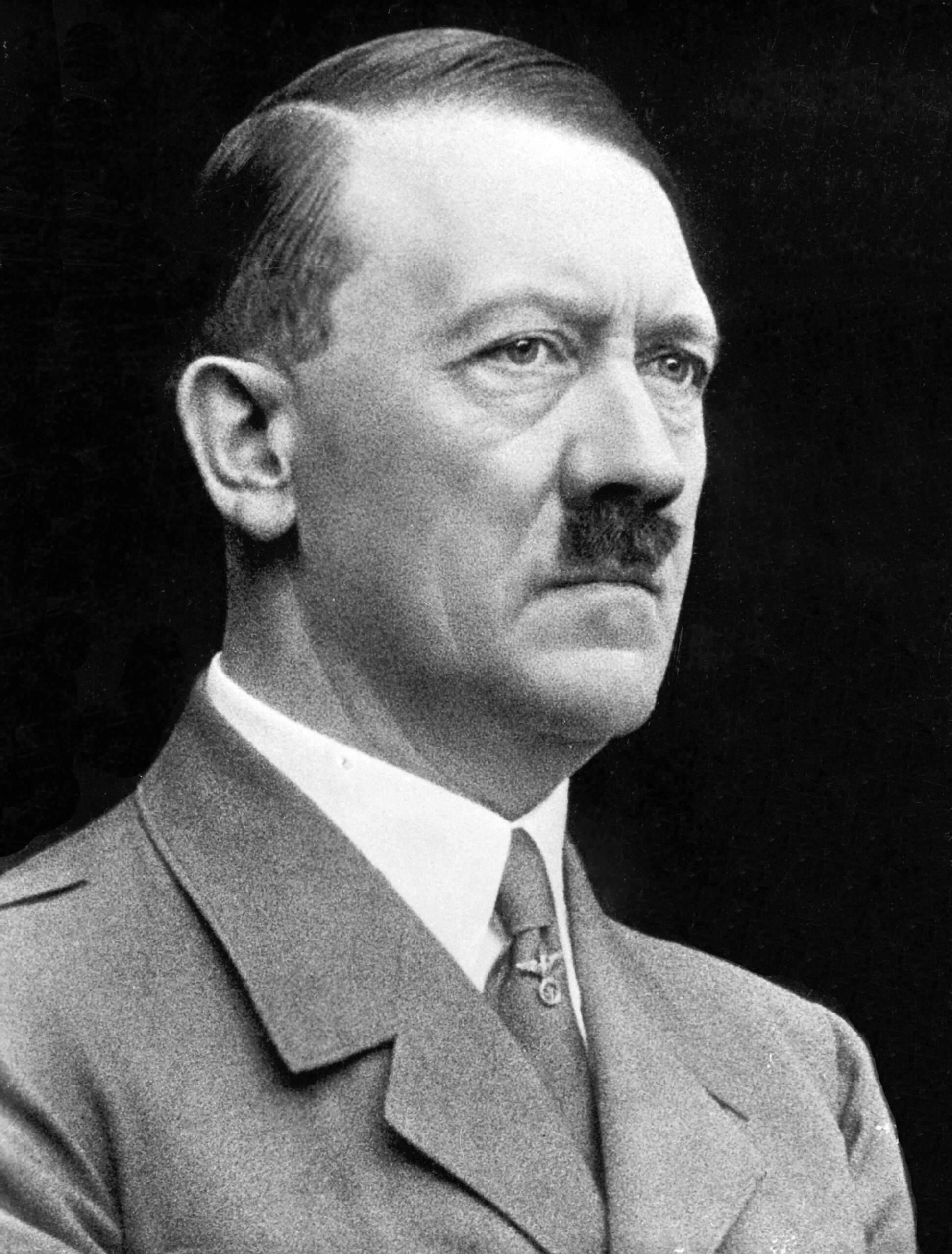A ‘dictator’ is defined as ‘a person exercising absolute power, especially a ruler who has absolute, unrestricted control in a government without hereditary succession’ (www.dictionary.com).
During the 20th century, Europe experienced some of the most manipulative and cunning dictators in history, including Mussolini, Hitler and Stalin. Below are a series of reading lists relating to this topic, to some of the most brutal dictators Europe has known.
In the 20th century, Europe was divided by war. Between 1900 and 1929 Europe was in many ways the centre of the world, until the beginning of WW1 and the failure of the Treaty of Versailles. Then came the Second World War which increased the tension between the countries and lead on to the Cold War.
Books about Europe in the 20th century:
- Dark Continent: Europe’s 20th Century – Mark Mazower
- The Age of Extremes – Eric Hobsbawm
Benito Mussolini (Italy)
 Mussolini was born in 1883 in Dovia di Predappio, Italy to Alessandro Mussolini, a blacksmith and socialist, and Rosa Mussolini, a devout Catholic schoolteacher. In 1902, Mussolini emigrated to Switzerland, and there studied the works of philosophers and sociologists. He also became active in the Italian socialist movement there, working for the paper, organising meetings and giving speeches. In 1904 he returned to Italy where he served in the army for two years until 1906.
Mussolini was born in 1883 in Dovia di Predappio, Italy to Alessandro Mussolini, a blacksmith and socialist, and Rosa Mussolini, a devout Catholic schoolteacher. In 1902, Mussolini emigrated to Switzerland, and there studied the works of philosophers and sociologists. He also became active in the Italian socialist movement there, working for the paper, organising meetings and giving speeches. In 1904 he returned to Italy where he served in the army for two years until 1906.
With the outbreak of World War One in 1914, many socialist parties supported the war. Mussolini supported the war also, but as people’s opinions became more nationalistic, Mussolini’s views clashed with other socialist members. He was eventually ousted from the socialist party, and joined the army in 1915, serving on the front line, reaching the rank of corporal before he was injured and discharged. After the war ended in 1918, Mussolini decided he would create a new political party, and in 1919 the Fascist party was born. Mussolini capitalised on public discontent and created a para-military unit called the ‘blackshirts’, who terrified political opponents. By 1922, Mussolini was put into authority and he gradually rid of all democratic institutions, resulting in dictatorship in 1925.
In 1935, Mussolini invaded Ethiopia and the capital city was quickly seized. In 1939, Mussolini sent support to the fascists in Spain during the Spanish Civil War, wanting to expand his influence. Hitler was greatly impressed with this and sought a pact with Italy. The ‘Pact of Steel’ was formed in 1939, and with the declaration of war in 1939 Italy was drawn into a war it was ill-prepared for. In 1942, with pressure mounting and allied forces invading Italy, Mussolini was forced to resign and he was arrested. Mussolini and his mistress attempted to escape but were captured and executed on 28th April 1945. Their bodies were hung on display in the Milan plaza.
Books about Benito Mussolini:
- My Autobiography – Benito Mussolini and Richard Washburn Child (trans.)
First Published: 1928
The autobiography, written in the late 1920s, around six years after Mussolini came into power, is a dictated narrative recounting his youth, his years as a journalist and his time in the First World War. It was translated by Richard Washburn Child, and was intended first as propaganda in America.
*Available to read in Gladstone’s Library – M 67.7/2
- Mussolini’s Italy: Life Under the Dictatorship, 1915-1945 – R.J.B. Bosworth
First published: January 2005
Whilst many people have heard of Adolf Hitler and his terrible actions, a very few have heard about Mussolini, or what he did. During Hitler’s reign as Fuhrer, Mussolini was the greatest influence to him. In this book, Bosworth tries to show the way in which the Fascist party grew. It is recommended that you read Bosworth’s first biography on Mussolini prior to reading this book to get a greater understanding.
Websites for further research:
- http://www.biography.com/people/benito-mussolini-9419443
- bbc.co.uk/history/historic_figures/mussolini_benito.shtml
- https://en.wikipedia.org/wiki/Benito_Mussolini
Adolf Hitler (Germany)
 Hitler was born in 1889 in the small town of Braunau, Austria to parents Alois Hitler and Klara Hitler. During his primary school education, Hitler showed great intellectual promise, and was very popular amidst the other students. However, the competition in High School was much higher and Hitler soon stopped trying. At 15 he failed his exams. He left school without any formal qualifications.
Hitler was born in 1889 in the small town of Braunau, Austria to parents Alois Hitler and Klara Hitler. During his primary school education, Hitler showed great intellectual promise, and was very popular amidst the other students. However, the competition in High School was much higher and Hitler soon stopped trying. At 15 he failed his exams. He left school without any formal qualifications.
Hitler’s father passed away in 1903 and at 18 years old he moved to Vienna with the money he inherited. He attempted to get into art school but was not accepted and then began his political interest. When the First World War began, he fought for the German Army and received an Iron Cross First Class, and reached the rank of Corporal.
In 1919 he attended his first meeting of the German Worker’s Party and quickly rose through the ranks, becoming the leader in 1921, renaming the party the Nazi’s. The party grew in popularity due to hard times in Germany. By the 1930’s the Nazi’s were polling around 6.5 million votes and in 1933 Hitler was made Chancellor by President Hindenburg. Hitler immediately set about consolidating his power and, with the death of Hindenburg in 1934, his power was secured. During his time as Fuhrer, his hatred towards the Jews and others grew, and with the start of WW2 the killing increased. However, Germany began to lose the war, and Hitler committed suicide on 30th April 1945.
Books about Adolf Hitler:
- Hitler: Speeches and Proclamations 1932-1945: The Chronicles of a Dictator – Max Domarus
First Published: 1962
A 3,400 page book series edited by Maz Domarus, presenting the day to day activities of Adolf Hitler between 1932 and 1945. It includes the text of significant speeches.
- The Rise and Fall of the Third Reich – William L. Shirer
First Published: 1960
Possibly one of the most famous books written about Adolf Hitler, The Rise and Fall of the Third Reich is a non-fiction book chronicling the rise and fall of Nazi power in Germany, from the birth of Adolf Hitler to his death in 1945. It won the ‘National Book Award for Nonfiction’.
- Mein Kampf – Adolf Hitler
First Published: 1925
An autobiographical book written by Adolf Hitler himself whilst he was in prison, outlining his future political plans and his political ideology. Originally published in German, there are many English translations.
*Available to read in Gladstone’s Library – M 65.5 4/3
Websites for further research:
- https://en.wikipedia.org/wiki/Adolf_Hitler
- bbc.co.uk/timelines/zsmm6sg
- biography.com/people/adolf-hitler-9340144
Joseph Stalin (Russia)
 Joseph Stalin was born on 18th December 1879 in Gori, Georgia as Iosif Vissarionovich Dzhugashvili (he later changed his name to Joseph Stalin, meaning ‘Man of Steel’). He was a very frail child and at seven or eight years old contracted smallpox, leaving his face scarred, and was also injured in a carriage accident leaving him with a slightly deformed arm. Because of this he was picked on by the other children, instilling him with a sense of inferiority. He developed a cruel streak for those who crossed him and strove for respect.
Joseph Stalin was born on 18th December 1879 in Gori, Georgia as Iosif Vissarionovich Dzhugashvili (he later changed his name to Joseph Stalin, meaning ‘Man of Steel’). He was a very frail child and at seven or eight years old contracted smallpox, leaving his face scarred, and was also injured in a carriage accident leaving him with a slightly deformed arm. Because of this he was picked on by the other children, instilling him with a sense of inferiority. He developed a cruel streak for those who crossed him and strove for respect.
Stalin’s mother wanted him to become a priest, and although he excelled in seminary school, he left in 1899. Accounts differ as to why.
Though he was never a strong orator he was excellent at the mundane operations – calling meetings, organising strikes etc.
The Russian Revolution started in 1917 and Lenin took the government. Stalin gradually moved up in the ranks and by the time anyone realised what he had been doing it was too late. Lenin died in 1924 and Stalin set out to take control. People were exiled, put on trial, humiliated and when his paranoia reached a peak, they were executed. Thus began Stalin’s reign of terror.
As the Second World War started in 1939, Stalin ignored all advice and signed a non-aggression pact with Adolf Hitler. However in 1941 the Nazi Blitzkrieg struck. The Soviet Army were completely unprepared and suffered massive losses. But the Soviets fought back, and whilst Russia suffered huge losses, the Germans were defeated.
After the end of the Second World War, Stalin became even more paranoid about the West and tensions increased. Whilst he was still popular from the successes of the Second World War, there were some assassination attempts and his health was deteriorating. He died on 5th March 1953, leaving a legacy of terror.
Books about Joseph Stalin:
- Stalin – A Political Biography – Isaac Deutscher
First Published: 1949
A detailed analysis of the life and career of the Soviet Union’s most brutal dictator. This book is firmly established as the standard Stalin biography.
*Available to read in Gladstone’s Library – M 74.5 5/3
- Stalin: the court of the Red Tsar – Simon Montefiore
First Published: 2003
A very widely acclaimed biography, it provides a riveting account of Stalin during the decades of his power. With extremely detailed research, Montefiore gives the reader the everyday details of a monstrous dictator’s life.
*Available to read in Gladstone’s Library – M 74.5 5/8
Websites for further research:
- https://en.wikipedia.org/wiki/Joseph_Stalin
- bbc.co.uk/timelines/z8nbcdm
- biography.com/people/joseph-stalin-9491723
- history.com/topics/joseph-stalin
By Work Experience student, Megan Roberts
